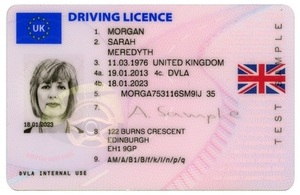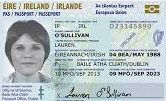 Most people in the United States consider driving a car a right, but in reality it is a privilege, and must be earned. At 15 a child may obtain a permit to drive with a licensed driver by taking a written exam. Then in a year, or at age 16, they have to take a written and driving test to get a license. The driving test can be waived if they have completed driver’s education. The exams are pretty basic, and in this country, most people pass the test on the first try, and if not on the first try, most pass on the second try. The first driving test was administered in 1899 Chicago and New York City. Massachusetts and Missouri were the first US states to require a license for driving a motor vehicle in 1903. Pennsylvania’s 1909 licensing laws were the first to give an age restriction “18 years of age” and the first state to allow 16 year olds to drive, if they were accompanied by a licensed driver, was Connecticut in 1921. I’m sure that prior to these times most people didn’t have one of the new fangled automobiles, so a license was not needed.
Most people in the United States consider driving a car a right, but in reality it is a privilege, and must be earned. At 15 a child may obtain a permit to drive with a licensed driver by taking a written exam. Then in a year, or at age 16, they have to take a written and driving test to get a license. The driving test can be waived if they have completed driver’s education. The exams are pretty basic, and in this country, most people pass the test on the first try, and if not on the first try, most pass on the second try. The first driving test was administered in 1899 Chicago and New York City. Massachusetts and Missouri were the first US states to require a license for driving a motor vehicle in 1903. Pennsylvania’s 1909 licensing laws were the first to give an age restriction “18 years of age” and the first state to allow 16 year olds to drive, if they were accompanied by a licensed driver, was Connecticut in 1921. I’m sure that prior to these times most people didn’t have one of the new fangled automobiles, so a license was not needed.
The United Kingdom made the move to require testing on March 24, 1934, and the requirements were a little different than in the United States. The test must be taken in order to receive a full license, and also to add full entitlements to an existing license. The test varies, depending on the class of vehicle that is to be driven, and is administered by the Driver and Vehicle Standards Agency or DVSA, in Great Britain and the Driver and Vehicle Agency, or DVA in Ireland. Those parts of the program seem to be just like here in the United States, but from there on out, there is a pretty big difference. In the United Kingdom, the minimum age at which one can take a driving test is currently 16 for mopeds and 17 for cars, with an exception allowed at 16 for those on the higher/enhanced rate of the mobility component. In addition to a driving licence, a CBT certificate may be required before a moped or motorcycle is ridden.
In Great Britain around 1.6 million people take the practical car test per year. Approximately 43% of those who take it pass the test, and the theory test has a pass rate of about 51.6%. Now I don’t know what you think, but I think the kids in this country would be pretty upset if only half of those who took the test got to actually drive  legally. Then again, maybe kids would study harder for the test in that case. I can’t tell you how many times I have heard a kid say, “It’s all common sense.” My thought is, “What wealth of knowledge about driving a car is a 15 year old, who has never driven one, going to have.” The answer is obvious…to the parents anyway. If they don’t study, they will likely not pass, but what of the people of Great Britain and Ireland. They know the test is difficult. My guess is that they do study, but that the test is a much more advanced version than those in the United States. Maybe it’s because they want it to be more than just common sense. I’m not saying our tests are too easy…but it’s something to consider when you look at the statistics.
legally. Then again, maybe kids would study harder for the test in that case. I can’t tell you how many times I have heard a kid say, “It’s all common sense.” My thought is, “What wealth of knowledge about driving a car is a 15 year old, who has never driven one, going to have.” The answer is obvious…to the parents anyway. If they don’t study, they will likely not pass, but what of the people of Great Britain and Ireland. They know the test is difficult. My guess is that they do study, but that the test is a much more advanced version than those in the United States. Maybe it’s because they want it to be more than just common sense. I’m not saying our tests are too easy…but it’s something to consider when you look at the statistics.


Leave a Reply